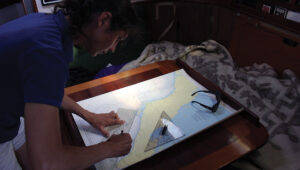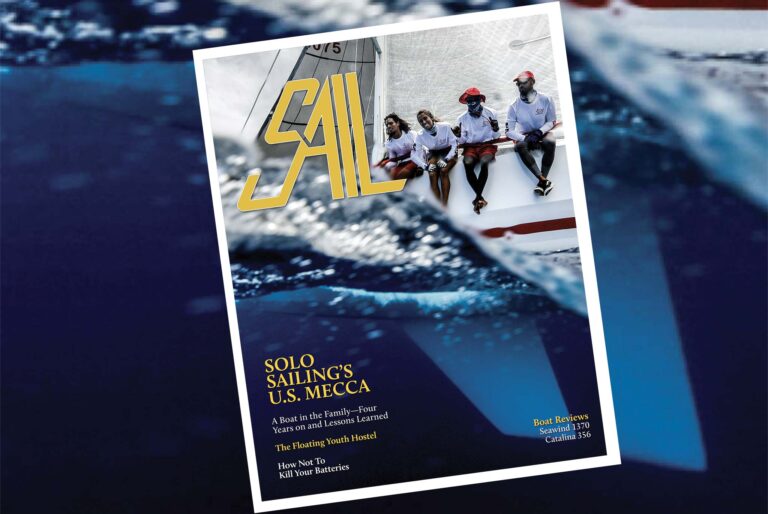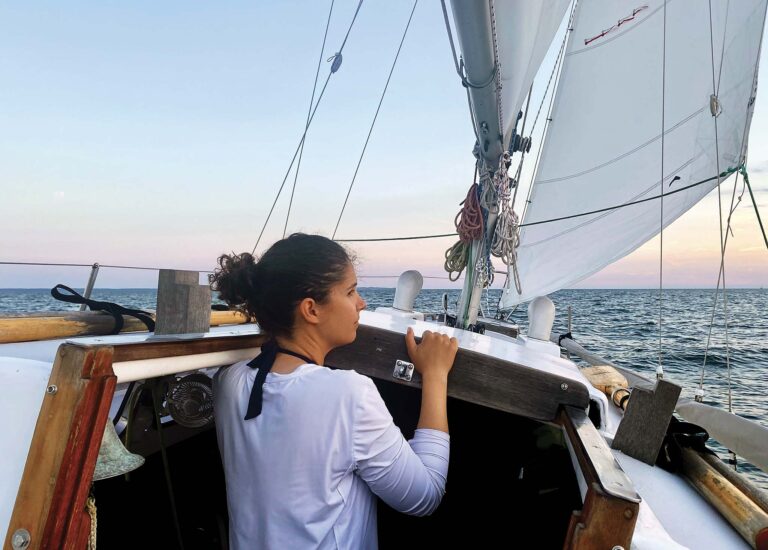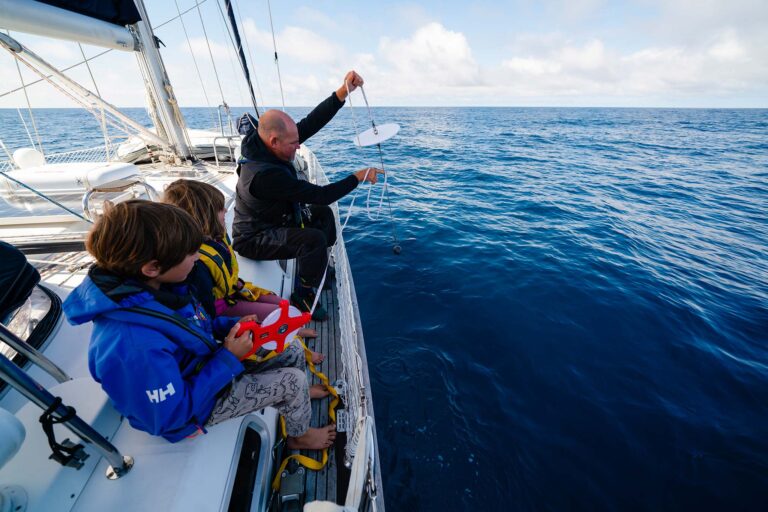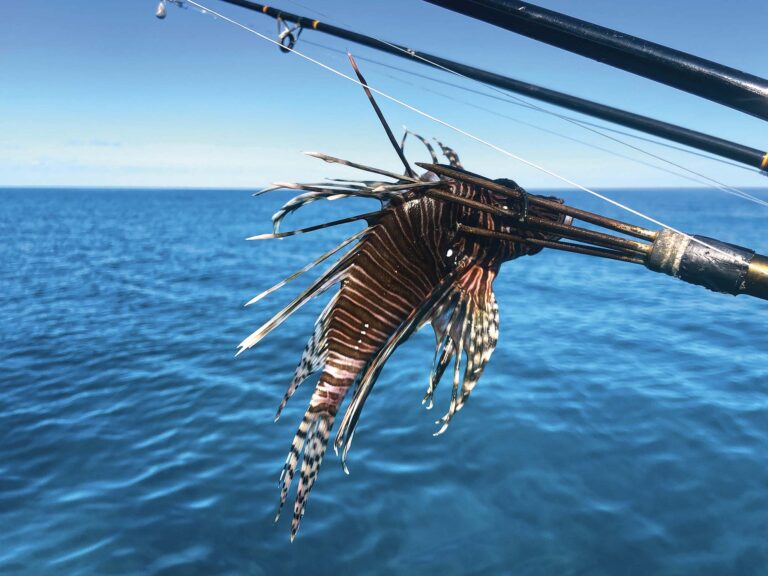I had been working on my Nassau 34, Trav’ler, all day and was ready for a break. Normally I would have had my boat in the water, but some serious chainplate leaks had recently damaged the boat’s interior, and they needed to be repaired. So there I was with my boat on the hard in mid-May, still nowhere near ready to splash. It was late afternoon, and I was cleaning up in preparation for yet more chores at home—mundane ones, like mowing the lawn—when I got a call from my buddy Larry.
“We’ll only be out for an hour,” he promised, and I decided to believe him. The wind out on Lake Ontario was light, the seas were calm, and despite there being some dark clouds in the distance, it looked like a great afternoon for a sail. I figured we could go out for a quick spin and a couple of beers, and I’d still have enough time to get the lawn cut back home.
Out on the water we did, indeed, have a very relaxing sail, until we reached a point about a half mile from the harbor entrance at Olcott, New York, on our way back in and the squall line hit. We had seen those dark, distant clouds moving in closer to us the entire time we were out. But they’d been spotty and looked like they would mostly pass north of us. The wind was still very light, and Larry’s Irwin 30, Citation, was moving along at less than 2 knots when the wind line started moving toward us in earnest. It didn’t look too bad to me, as it had no white water associated with it. But Larry felt differently and started the engine, although I convinced him not to furl his 150 percent genoa, which we were flying alone, without the mainsail up.
After the wind line hit we started sailing along nicely on a beam reach. As the rail dipped into the water, it became apparent that we were a bit overpowered, so I leaned over from where I was sitting at the helm to ease the sheet. It was then I discovered that Larry had not run the line around the cleat properly before securing it, and that there was now an override over the first turn, making it impossible to release.
At that same moment, the wind increased and suddenly, because we could not ease the genoa, we were on our beam end with solid water pouring into the cockpit. The companionway was also wide open, putting us in grave danger of flooding the cabin and sinking. The rudder lifted up out of the water, and the upper lifeline was completely submerged, as we went into full knockdown mode.
Eventually, the boat rounded up into the wind, but that only put us in a worse spot as the genoa was immediately backwinded. Fortunately, because the engine was on I had enough steerage to gybe the boat back around so that the genoa filled on the correct side. Having some steerage also allowed me to keep the bow into the wind, which kept us from broaching again long enough to do something about our predicament. I pulled out my Leatherman multitool and gave it to Larry who took a few seconds to figure out how to access a knife blade and then cut the sheet. At long last, we were vertical again, although we still had a wild genoa to tame.
It is normally my policy never to use a winch to roller-furl a sail, but that rule now went out the window. Eventually, we were able to get most of the genoa furled, but since it was wrapped so tightly in the heavy wind, we ran out of furling line and a small triangle of the sail remained exposed. Meanwhile, the other genoa sheet had fouled on something below the waterline, so that the sail was still drawing. Fortunately, our propeller did not seem to be fouled, and we were able to motor into the harbor.
Larry took over the helm—it was his boat, after all—and we managed to get safely back to a dock. In the shelter of the harbor, I was able to untie the bowline in the fouled sheet at the clew of the sail, and we were able to clear the line without any real problems. That done, we finally had some time to reflect on the terrible problems that the fouled genoa sheet had caused—and put back a couple more beers.
The fact is, Larry and I are lucky to be alive. If not for some good crew work and fast thinking, things might have turned out very differently that day. We came dangerously close to losing the boat in the 48F degree water of Lake Ontario, where hypothermia is a real danger for anyone lost overboard. In water this cold, an MOB will remain conscious for less than an hour.
On a lighter note, I should like to note that throughout the incident I was able to keep my beer from spilling by putting it safely into the cubby hole for the winch handle in the cockpit coaming. As for the lawn, I got it cut early that same evening.
Got a good story? We want to see it. Send it to [email protected]
Hindsight
What we did right:
I had a knife on my belt. What saved us was being able to cut the genoa sheet quickly.
Larry starting the engine was an important move. It helped us keep the boat head to wind once we got our rudder back in the water.
We did not panic. There was no yelling or screaming or debating our course of action. Larry and I both understood what had to be done to bring the boat back under control.
I acted quickly to gybe the boat after the genoa was backwinded. This saved us from a worse situation and gave us time to cut the sheet.
We had some beer back at the dock to help us calm down.
What we did wrong:
Improper cleating of the genoa sheet was obviously our big problem. Larry got careless securing the sheet in the light air, and we weren’t ready when the gusts hit. Lines should always be safely secured as a matter of routine.
I seriously misjudged the strength of the squall line and talked Larry out of furling the jib. It was his boat, and I should not have questioned his call.
In the excitement we forgot all about the lazy genoa sheet dragging in the water. Had it fouled the prop, we could have lost the use of our engine.
We were not wearing life jackets, nor were they easily accessible.
Illustration by Steve Sanford; photo by Joe Higgins

